
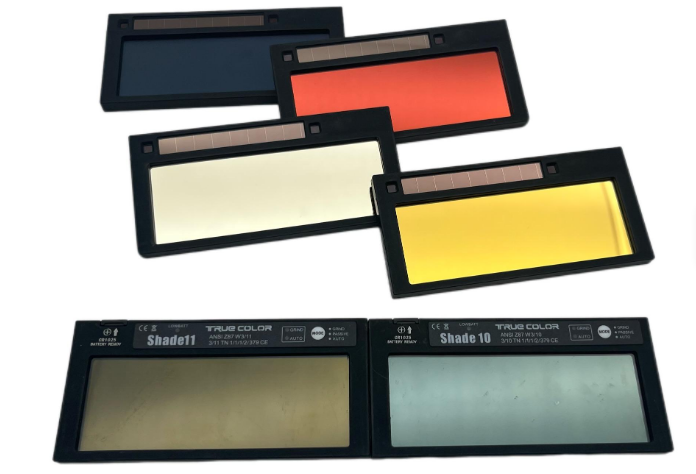
TynoWeld welding filters play a vital role in the welding process. They enhance safety and efficiency by protecting welders from harmful light. I find it crucial to choose the right welding lens for optimal performance. In fact, nearly 90% of welding-related eye injuries could be prevented by using advanced welding filters like TynoWeld, including options like the 4×2 lens and the 2×4 filter. Selecting the appropriate filter can significantly impact both comfort and safety during welding tasks.
Key Takeaways
- TynoWeld filters protect welders from harmful light, reducing the risk of eye injuries by nearly 99.9999%.
- Auto darkening filters adjust their tint automatically, enhancing visibility and comfort during welding tasks.
- Using TynoWeld filters can significantly reduce eye strain, allowing for longer, more efficient welding sessions.
- The True Color Technology in TynoWeld filters minimizes green tint, improving color accuracy and precision.
- Choosing the right shade based on the welding process and amperage is crucial for optimal protection.
- TynoWeld filters are solar-powered with battery assist, providing up to 3-5 years of battery life.
- Passive filters offer basic protection but require manual adjustments, which can interrupt workflow.
- Selecting a comfortable and lightweight filter enhances productivity and job satisfaction during welding
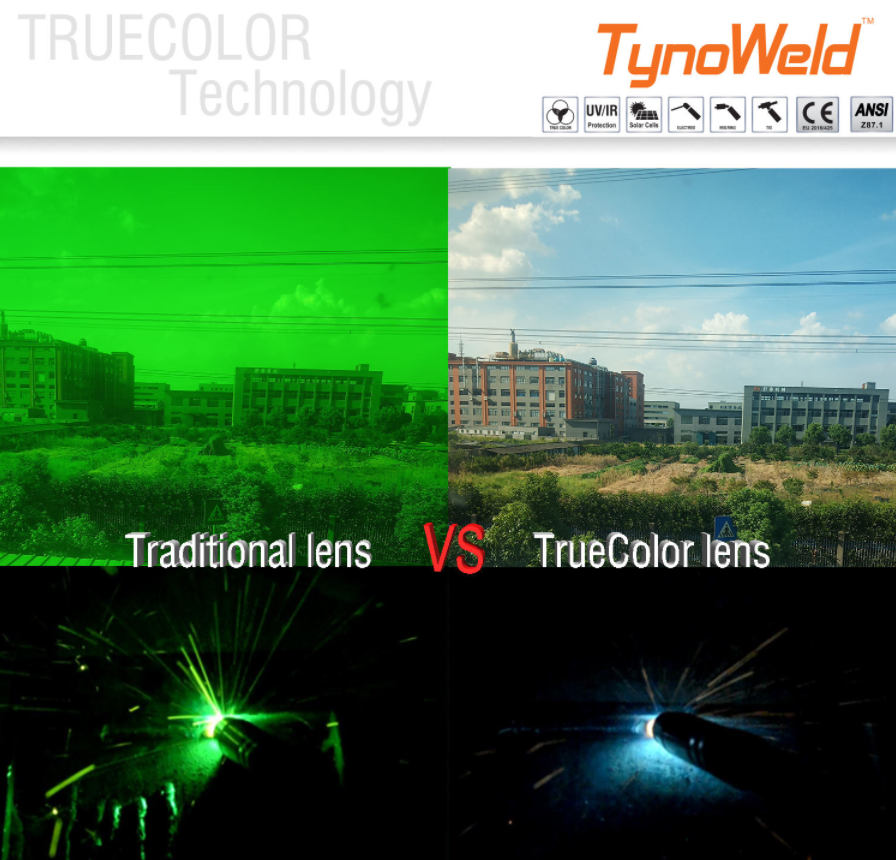
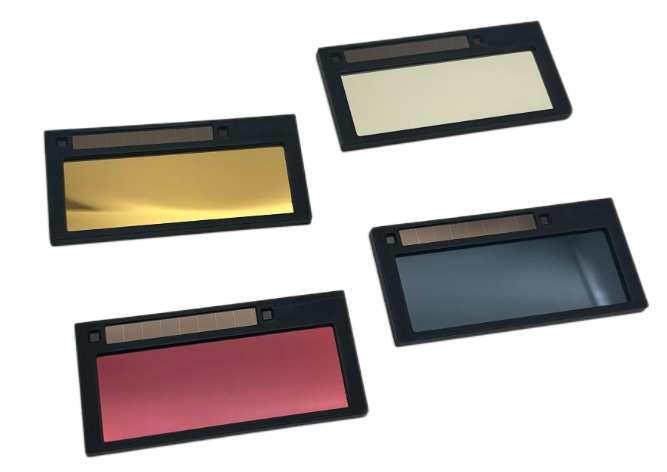
Overview of TynoWeld FiltersTypes of Welding Filters
When I think about welding filters, I recognize that they come in various types, each designed for specific applications. The two primary categories are auto darkening filters and passive filters. Auto darkening filters adjust their tint automatically based on the intensity of the welding arc. This feature allows me to maintain visibility without lifting my helmet frequently. On the other hand, passive filters provide a fixed shade, which can be suitable for certain welding tasks but may not offer the same level of convenience.
Here’s a quick overview of the types of welding filters available:
| Type of Welding Filter | Description | color choice |
|---|---|---|
| Auto Darkening | Adjusts tint automatically for optimal visibility. | Red;Gold;Silver;Blue;HD |
| Passive | Fixed shade, suitable for specific tasks. | Gold;Black;clear |
Importance of Welding Filters
Using a welding filter is crucial for protecting my eyes and ensuring a safe working environment. Without proper protection, I risk exposure to harmful light and radiation. Without proper eye protection, welders often suffer from eye diseases such as laser eye damage, glaucoma, redness, swelling and inflammation.This statistic highlights the importance of using effective welding filters.
Moreover, TynoWeld filters incorporate advanced technologies that set them apart from other options on the market. For instance, their True Color Technology minimizes the green tint often found in traditional filters. This enhancement allows me to see the materials I am working with more clearly, improving my precision. Additionally, the automatic tint adjustment feature enhances visibility and reduces eye fatigue, making my welding tasks more efficient.
Auto Darkening Filters Explained

How Auto Darkening Filters Work
Auto darkening filters (ADFs) revolutionize the way I approach welding tasks. These filters utilize advanced technology to provide immediate protection from harmful light. When I strike the welding arc, high-sensitivity sensors detect the intense light and differentiate it from other light sources. This detection triggers the filter to adjust its tint almost instantly, ensuring my eyes remain shielded from harmful radiation.
The operation of ADFs relies on liquid crystal technology. This technology allows the lens to change its shade in response to the brightness of the welding arc. The reaction time is impressive; TynoWeld helmets react in less than a split second, which is significantly faster than the industry standard of 1/10,000 seconds. This rapid adjustment is crucial for maintaining visibility while protecting my eyes.
Key Components of Auto Darkening Filters
Understanding the key components of auto darkening filters helps me appreciate their functionality. Here are the main elements that contribute to their effectiveness:
- Arc Sensors: These sensors detect the flash of the welding arc and activate the darkening process.
- Liquid Crystal Cells: These layers adjust the polarization of light, allowing the lens to change its shade based on the intensity of the arc.
- Electronic Control Unit (ECU): This unit processes signals from the arc sensors and sends voltage to the liquid crystal cells for immediate darkening.
| Component | Function |
|---|---|
| Arc Sensors | Detect the welding arc and trigger darkening. |
| Liquid Crystal Cells | Adjust the lens shade based on light intensity. |
| Electronic Control Unit | Processes sensor signals for quick response. |
When I begin welding, the sensors quickly recognize the increase in light intensity. They send a signal to the auto-darkening filter, which adjusts the lens shade based on the brightness level. This seamless interaction between components ensures that I can focus on my work without interruptions.Tynoweld filters switch to dark within 0.1ms, top fast switching time.
Advantages of Auto Darkening Filters
The benefits of using auto darkening filters are numerous. First and foremost, they enhance safety by providing continuous protection against harmful UV and IR radiation. I can maintain focus on my welding tasks without lifting my helmet frequently, which minimizes distractions and enhances productivity.
A study conducted by a military shipbuilder revealed that welders’ productivity increased by 44% when using advanced welding helmet systems. This increase is largely due to the comfort and convenience provided by auto darkening filters. The sophisticated lenses automatically adjust to the intensity of the welding arc, allowing me to work continuously without interruptions.
Features of TynoWeld Auto Darkening FiltersShade Options: 9 to 15
TynoWeld auto darkening filters offer a versatile range of shade options, specifically from 9 to 15. This range accommodates various welding processes and amperage levels. For instance, when I perform Shielded Metal Arc Welding (SMAW), I often choose shades based on the amperage. Here’s a quick reference table that outlines the recommended shades for different welding processes:
| Welding Process | Amperage Range | Recommended Shade |
|---|---|---|
| Shielded Metal Arc Welding (SMAW) | Up to 40 amps | Shade 8-10 |
| 40-80 amps | Shade 10-12 | |
| 80-175 amps | Shade 12 | |
| 175-300 amps | Shade 14 | |
| Over 300 amps | Shade 14 or higher | |
| Gas Metal Arc Welding (GMAW) | Up to 100 amps | Shade 10 |
| 100-200 amps | Shade 11 | |
| 200-250 amps | Shade 12 | |
| 250-500 amps | Shade 13-14 | |
| Gas Tungsten Arc Welding (GTAW) | Up to 50 amps | Shade 8-10 |
| 50-100 amps | Shade 10 | |
| 100-200 amps | Shade 12 | |
| 200-300 amps | Shade 12-13 | |
| Plasma Arc Cutting and Welding | Plasma Cutting (up to 300 amps) | Shade 8-12 |
| Plasma Welding (up to 200 amps) | Shade 10-12 |
This flexibility allows me to select the appropriate shade for my specific welding tasks, ensuring optimal visibility and protection.
Colorful Auto Darkening Filters
One of the standout features of TynoWeld filters is their colorful auto darkening capability. These filters enhance visibility by allowing a broader spectrum of colors to be visible. I appreciate how this feature improves my ability to see the weld pool and surrounding areas clearly.
- Colorful filters help reduce eye strain, enabling me to keep my helmet down during non-welding tasks.
- They allow me to perceive wavelengths from 480 nm (blue) to 720 nm (red), which means I can see all visible colors. This capability significantly enhances my overall experience and precision while welding.
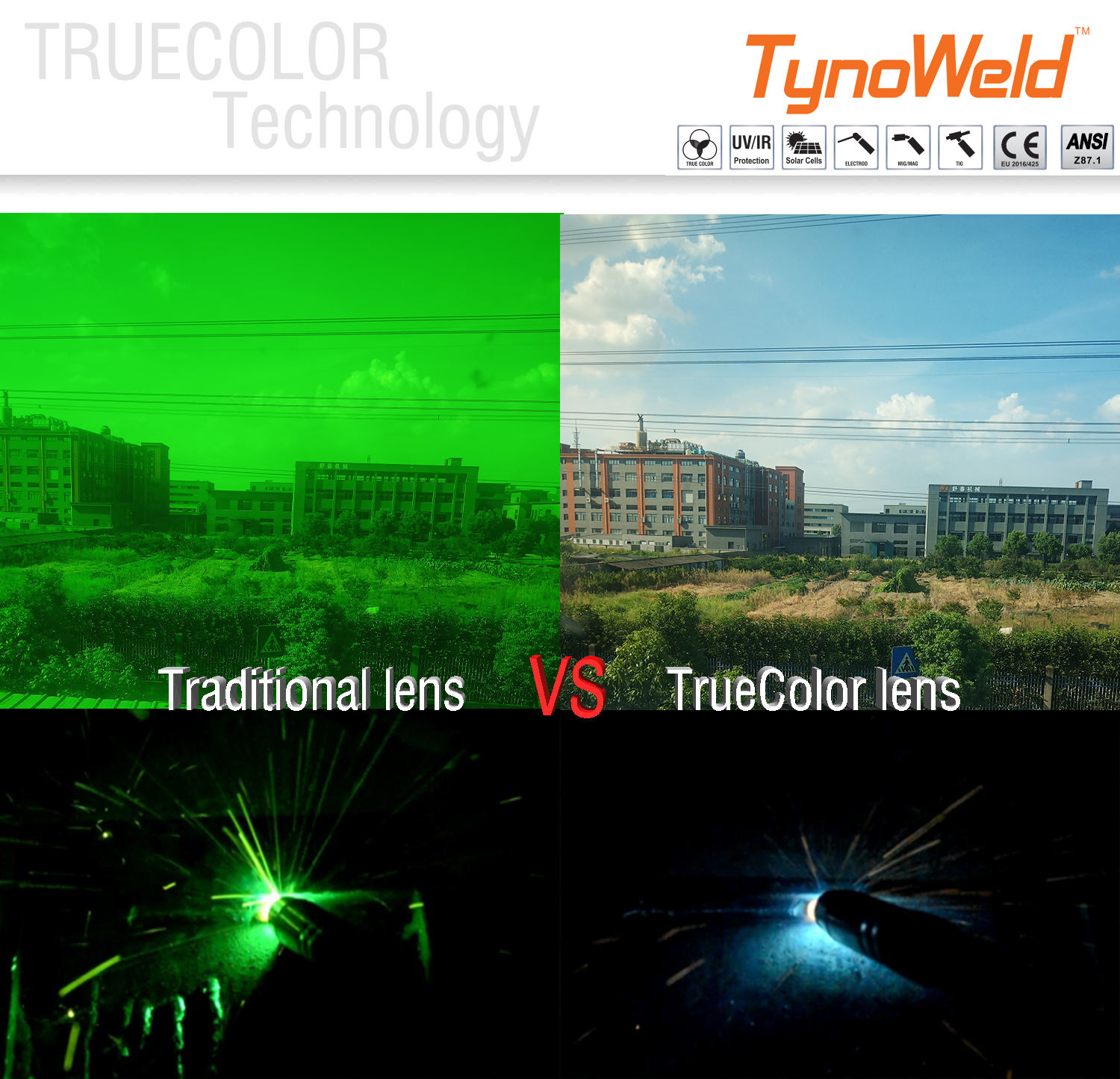
Battery and Power Management
TynoWeld auto darkening filters are designed with efficient battery and power management systems. They are solar-powered with battery assist, which means I can rely on them for extended periods without worrying about frequent battery changes.
- Under normal welding conditions, these filters provide up to three years of expected battery life. This longevity is a significant advantage, as it minimizes downtime and maintenance.
With these features, TynoWeld filters not only enhance my safety but also improve my overall welding efficiency.
Passive Welding Filters Overview
Passive welding filters serve as a traditional option for eye protection during welding tasks. I often find these filters straightforward and reliable, especially for specific applications. They provide a fixed shade that protects my eyes from harmful light, but they come with their own set of characteristics.

Characteristics of Passive Filters
Passive filters are typically made from materials like polycarbonate. This material offers outstanding impact strength, which enhances the durability of the filter. The optical clarity of polycarbonate is essential for maintaining the effectiveness of the filters. Here are some key characteristics of passive filters:
- Fixed Shade: Passive filters have a predetermined shade that does not change. This means I must choose the right shade before starting my work.
- Manual Adjustment: I need to remove the helmet to inspect the weld, which can interrupt my workflow.
- Basic Protection: While they provide UV and IR protection, I remain exposed when I lift the helmet.
When to Use Passive Filters
I often consider using passive filters in specific situations. For instance, when I perform tasks that require minimal movement or when I work in environments where the welding arc remains constant, passive filters can be effective. They are also suitable for beginners who may not yet require the advanced features of auto darkening filters.
Here are some scenarios where I find passive filters beneficial:
- Low Amperage Welding: For low amperage tasks, a passive filter can provide adequate protection without the need for constant adjustments.
- Budget Constraints: Passive filters generally come at a lower cost, making them an attractive option for those on a budget.
Limitations of Passive Filters
Despite their advantages, passive filters have limitations that I cannot overlook. The most significant drawback is the lack of shade adjustment. This limitation means I must frequently remove my helmet to check my work, which can lead to eye strain and discomfort.
Here’s a comparison of passive and auto darkening filters:
| Feature | Passive Welding Helmet | Auto Darkening Welding Helmet |
|---|---|---|
| Shade Adjustment | Manual (requires removal to inspect weld) | Automatic (adjusts to welding arc) |
| UV/IR Protection | Limited (exposed when removed) | Comprehensive (protects during welding) |
| Comfort and Usability | Less comfortable, requires frequent removal | More comfortable, allows continuous welding |
| Advanced Features | Basic, no sensors | Advanced sensors, sensitivity control, grind modes |
| Cost | Generally lower cost | Higher cost due to technology |
Safety Benefits of TynoWeld Filters
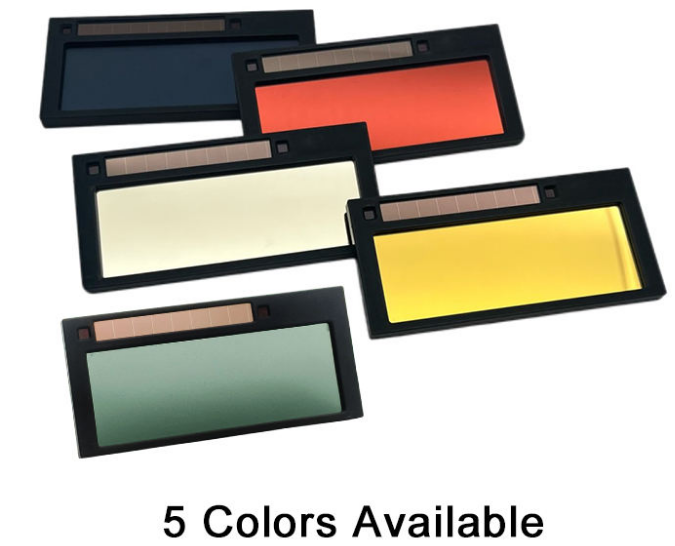
Eye Protection Standards
When I choose TynoWeld filters, I know I am selecting products that comply with international eye protection standards. These standards ensure that I receive adequate protection from harmful rays during welding. Here’s a quick overview of the key standards that TynoWeld filters meet:
| Standard | Description |
|---|---|
| CE | EN175 & EN379& ISO16321 |
| ANSI | Z87.1 |
| CSA | Z94.3 |
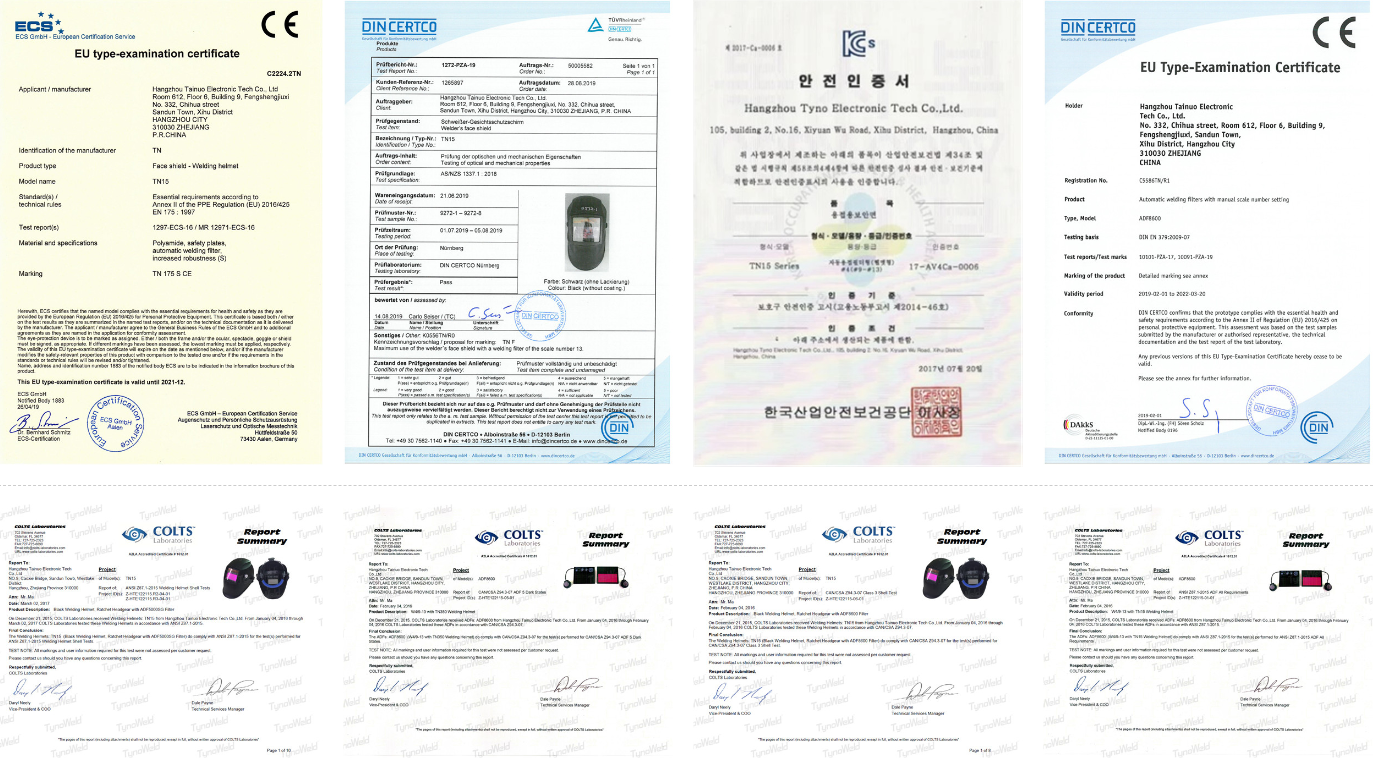
These certifications give me confidence that TynoWeld filters provide the necessary protection against ultraviolet (UV) and infrared (IR) radiation. I appreciate that these filters block harmful UV rays, which are a primary cause of photokeratitis, a painful condition that can result from excessive UV exposure.
Reducing Eye Strain
Using TynoWeld filters significantly reduces the risk of eye strain during long welding sessions. I follow ANSI standards for eye and face protectors, which recommend using full face shields with adjustable shade levels. This approach ensures I have adequate protection against UV exposure.
- Protective eyewear, like TynoWeld filters, effectively reduces the harmful effects of ultraviolet, visible, and infrared radiation during welding.
- The ANSI Z87.1 standard specifies allowable transmission values of harmful rays through welding protectors, ensuring I remain safe while working.
By utilizing TynoWeld filters, I can focus on my tasks without worrying about the discomfort that often accompanies prolonged exposure to bright welding arcs. The automatic tint adjustment feature helps me maintain a clear view while protecting my eyes, which is essential for reducing fatigue.
Enhancing Visibility During Welding
Visibility is crucial when I am welding, especially in low-light environments. TynoWeld filters enhance my ability to see clearly, thanks to their professional auto-darkening technology. This technology adjusts the tint based on light intensity, allowing me to work efficiently without straining my eyes.
- The adjustable shade range from 5 to 13 provides adaptability in various welding environments, ensuring I can see the weld pool and surrounding areas clearly.
- This capability is particularly beneficial when I work in dimly lit spaces, where visibility can be a challenge.
With TynoWeld filters, I can perform my welding tasks with confidence, knowing that I have the right protection and visibility to do my job effectively.
Choosing the Right Welding Filter
Selecting the right welding filter is essential for my safety and efficiency. I consider several factors before making a choice.
Factors to Consider
When I choose a welding filter, I evaluate these key factors:
- Type of welding being performed: Different welding processes require different levels of protection.
- Amperage used in the welding process: Higher amperage often necessitates darker shades for adequate protection.
- Need for a wide shade range: If I switch between processes, a filter with a broad shade range is beneficial.
Additionally, I look for filters that utilize nanofiber technology. These filters capture small weld fume particles effectively while maintaining low-pressure resistance to airflow. This feature ensures optimal performance over time. By selecting the right filter, I can increase productivity and profitability while lowering downtime and filter replacement costs.
Matching Filters to Welding Techniques
Different welding techniques influence my choice of welding filter. For instance, when I perform welding fume extraction, I need filters that can capture ultrafine particles effectively. I often opt for filters with a Minimum Efficiency Reporting Value (MERV) rating of at least 13 for general applications. This rating ensures high efficiency in capturing hazardous particles.
For specific materials, I choose higher MERV-rated filters (15 and above) when welding substances that release toxic elements like hexavalent chromium and cadmium. These filters are crucial for capturing fine particulates associated with these hazardous substances, ensuring a safer work environment. Understanding the pollutants generated by each welding process helps me select the most appropriate filter.
Personal Preferences and Comfort
Comfort plays a significant role in my selection of welding filters. Surveys indicate that comfort enhances productivity and job satisfaction. I appreciate filters that fit well and do not cause discomfort during long welding sessions. Manufacturers are increasingly focusing on improving comfort features, which positively affects my overall work experience.
I also consider the weight of the welding lens. A lighter filter reduces fatigue, allowing me to work longer without strain. Ultimately, I want a welding filter that not only protects my eyes but also feels comfortable throughout my tasks.
TynoWeld filters are essential for my safety and efficiency while welding. They provide specialized options that enhance visibility and comfort. With features like TrueColor lens technology, I experience improved color accuracy and reduced eye strain.
I find auto darkening filters particularly beneficial. They offer adjustable shade and sensitivity settings, allowing me to customize my protection based on the welding process. In contrast, passive filters lack this flexibility.
When selecting a filter, I consider the recommended shade levels for my tasks:
| Shade Level | Recommended Use |
|---|---|
| 4 | Minimal protection, not for welding |
| 5-7 | Simple cutting or grinding |
| 10-12 | MIG welding, moderate intensity |
| 13 | High-precision TIG welding, maximum protection |
Choosing the right filter ensures I stay safe and productive in my work.
FAQWhat is the difference between auto darkening and passive filters?
Auto darkening filters adjust their shade automatically based on the welding arc’s intensity. Passive filters have a fixed shade, requiring me to remove the helmet for adjustments.
How do I know which shade to choose for my welding task?
I select the shade based on the welding process and amperage. For example, I use shades 10-12 for MIG welding and shade 14 for high-amperage tasks.
Can I use TynoWeld filters for all types of welding?
Yes, TynoWeld filters are versatile and suitable for various welding techniques, including MIG, TIG, and stick welding. I always check the recommended shade for my specific task.
How often should I replace my welding filter?
I recommend replacing the filter when it shows signs of wear, such as scratches or discoloration. Regular maintenance ensures optimal performance and safety during welding.
Are TynoWeld filters compliant with safety standards?
Absolutely! TynoWeld filters meet international eye protection standards, including CE, ANSI, and CSA. This compliance gives me confidence in their protective capabilities.
How do I maintain my TynoWeld filter?
I clean the filter regularly with a soft cloth and mild soap. Avoid using abrasive materials that could scratch the lens. Proper care extends the filter’s lifespan.
What is True Color Technology in TynoWeld filters?
True Color Technology reduces the green tint common in traditional filters. This feature enhances my visibility, allowing me to see colors more accurately while welding.
Do TynoWeld filters require batteries?
TynoWeld auto darkening filters are solar-powered with battery assist. This design provides long-lasting performance, typically lasting up to three years under normal conditions.
Media Contact
Company Name: Hangzhou Tainuo Electronic Tech Co., Ltd.
Email: Send Email
Country: China
Website: https://www.tynoweld.com/
